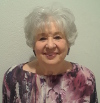WHAT’S IN A NAME?
Did you ever stop to wonder who created some of the most popular conventions of our modern day? A couple of the most revered methods were not devised by those whose names they bear.
The most famous one, unquestionably, is STAYMAN. According to the Official Encyclopedia of Bridge, “The Stayman convention was invented by George Rapee, but the first article on the convention (The Bridge World, June 1945) was authored by Sam Stayman, and the convention was named for the writer rather than the inventor.”
Another popular convention is known as JORDAN (a jump to 2NT after your RHO has doubled your partner’s opening bid in one of a suit). The Jordan 2NT bid shows four trump and about 9 HCP with defensive values as well. Though attributed to Bob Jordan, contemporaries cite Alan Truscott as the creator. However, since there was already a treatment called Truscott (describing two-suiters over a Strong Club opening) — perhaps our Bridge Copyright Bureau thought it was too confusing to the common folk to have a second convention named after the beloved New York Times columnist — so they allowed the plagiarism to stand.
There is another convention, though not designated by name, that should have been called CRANE (as in Barry Crane). I am not applauding, condemning or recommending its use, merely giving you the scoop (of which few people today are aware).
American icon, Barry Crane,* was generally regarded as the best Match Point player ever to grace a bridge table. During his heyday, he had narrowed many facets of the game down to a science! Later in his bridge career he made a practice of NEVER letting the opponents declare 1NT. Barry had gone to great lengths to analyze his results and his statistics proved that he averaged in the very low 50% range on such hands. Thus, he adopted the unmitigated stance never to allow his partnership to defend against 1NT. This was remedied by an automatic balance with a non-descript 2C bid which merely announced to the table that playing 1NT was no longer an option and thereafter — his partnership would roll with the punches and scramble for cover! According to Crane’s survey, passing was a No-No! ANYTHING was better than allowing the opponents to play 1NT. This is not an endorsement of the system though Barry was a sensational player and a fine technician and one must respect his personal views. Perhaps, it falls under the heading “tricks of the trade.” Clearly, his goal was to corner the market on master points which he did in an unprecedented fashion. (*For those of you new to the bridge scene, Barry Crane was famous for his association with such heralded TV shows as Mannix and Mission Impossible. In 1985, he was the victim of a vicious, unsolved murder which shocked the bridge world and abruptly ended his long, distinguished career. His name will always be synonymous with setting record after record in what was heretofore known as The McKinney Race).
The last of the surnamed conventions hits a bit closer to home, but I’ve opted to leave WOLFF SIGNOFF for our next meeting.



Judy,
You probably should mention he was originaly Barry Cohen and originally was a player to be hustled in his home of Detroit. He actually played an old fashioned, pretty strict system. I turned down a couple of chances to play with him, but he was on my teams a couple of times.
Sandra Landy, who won world championships playing for the British Women’s team, is constantly asked how she came to develop ‘her’ conventional 2C overcall over 1NT. Of course the real originator was American Alvin Landy — no relation. However, the ‘Landy Slam Try’ is correctly associated with Sandra — you bid slam, then try to make it!
I’ve heard many a tale about Barry Crane, and wonder if there’s a book out about him. What I’ve been told is mostly unflattering, about the machinations he used to cause the outcome he wanted, especially with sabotaging standings of up-and-coming players.
I can’t help but notice that he shares a surname with another unsolved vicious-murder victim, Bob Crane.
Judy,
On the occasion I played with Alan Truscott, I DID make the mistake of rhyming off Jordan 2NT as we went through our card. Turns out, he was a ‘little’ sensitive about the issue and when the cards finally hit the table, my convention card did denote we played Truscott 2NT. Biggest smile I got from him during the game was when it actually came up in play and was able to inform our opponents that we were playing the Truscott 2NT raise when they asked what the alert was all about.
GM
The Barry Crane murder is unsolved only because the police were ordered not to solve it. The trail was available in the form of records of the fees collected in the months prior to his murder at the Cavendish West Club, where he played high-stake partnership gin rummy with players who cheated him to the tune of about $60,000. It was they who had the motive to hire a thug to kill Barry, as Barry was influential enough to have the cheating ring smashed and the cheaters arrested once he discovered he had been cheated. As the cheaters were mob-connected, and the mob had an “arrangement” with the San Fernando Valley DA’s office and police, this trail was never pursued. The witnesses to the cheating were (sensibly) too scared for their own lives to come forward, but not too scared to confide (anonymously) in me.